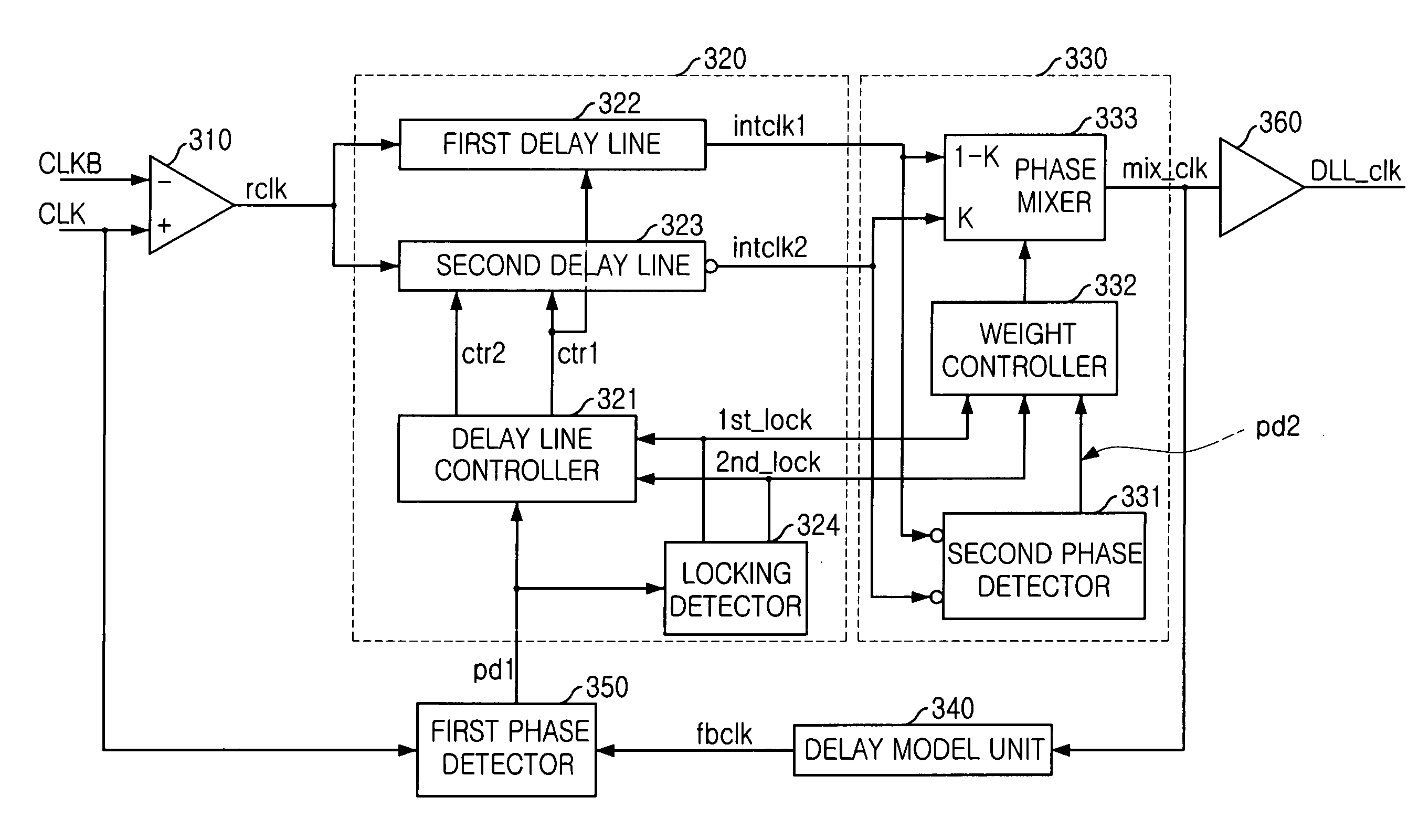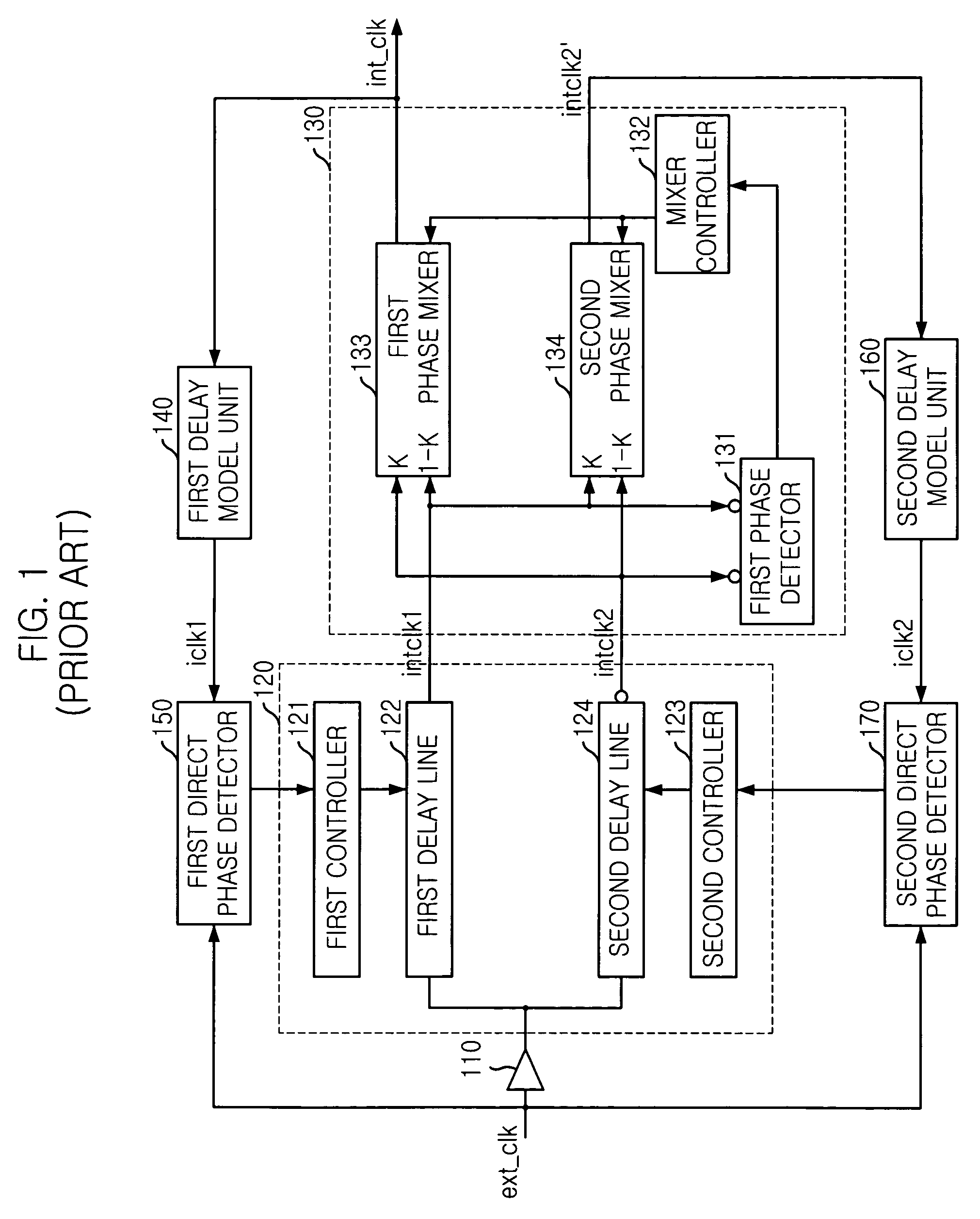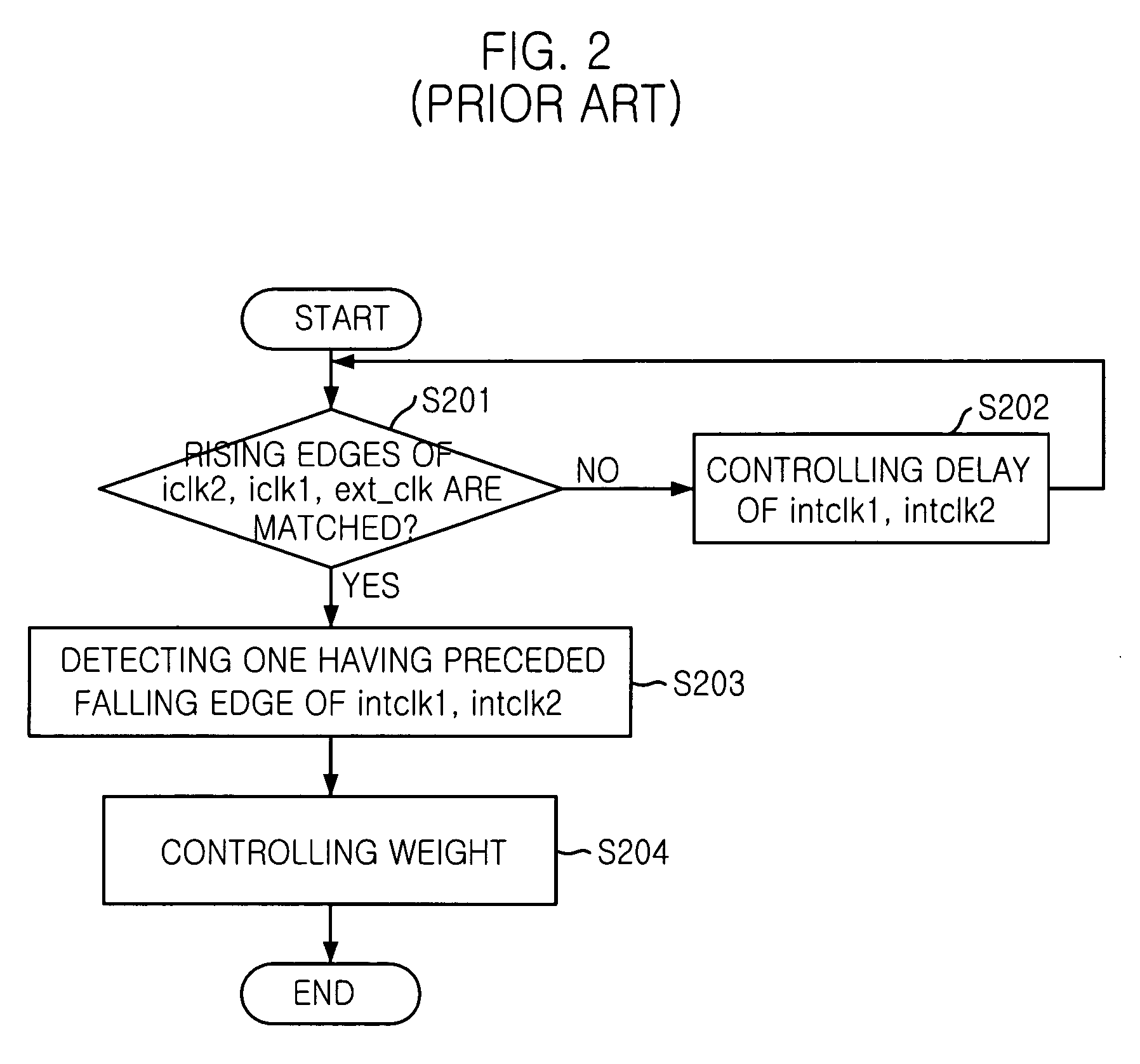Delay locked loop and its control method
a delay model and control method technology, applied in pulse manipulation, pulse technique, instruments, etc., can solve the problems of large power consumption, large size of delay model units and phase detectors in each of the two feed-back loops, and achieve the effect of small siz
- Summary
- Abstract
- Description
- Claims
- Application Information
AI Technical Summary
Benefits of technology
Problems solved by technology
Method used
Image
Examples
first embodiment
[0049]FIG. 3 is a block diagram showing a DLL in accordance with the present invention.
[0050]As shown, the DLL includes a first clock buffer 310, a second clock buffer 360, a delay line unit 320, a duty error control unit 330, a delay model unit 340 and a first phase detector 350.
[0051]The first clock buffer 310 receives an external clock signal CLK and its inverted signal, namely an external clock bar signal CLKB to output a rising edge clock signal rclk by buffering the external clock signal CLK and the external clock bar signal CLKB.
[0052]The delay line unit 320 receives the rising edge clock signal rclk and a first comparison signal pd1 to output a first delayed internal clock signal intclk1, a second delayed internal clock signal intclk2, a first delay locking signal 1st_lock and a second delay locking signal 2nd_lock.
[0053]The delay line unit 320 includes a first delay line 322, a second delay line 323, a delay line controller 321 and a locking detector 324.
[0054]The delay lin...
second embodiment
[0110]FIG. 9 is a block diagram showing a DLL in accordance with the present invention.
[0111]As shown, the DLL includes a first clock buffer 910, a second clock buffer 920, a third clock buffer 970, a delay line unit 930, a duty error control unit 940, a delay model unit 950 and a first phase detector 960.
[0112]The first clock buffer 910 receives an external clock signal CLK through a non-inverting terminal and its inverted signal, namely an external clock bar signal CLKB through an inverting terminal in order to output a first rising edge clock signal rclk1 by buffering the external clock signal CLK and the external clock bar signal CLKB.
[0113]The second clock buffer 920 receives an external clock signal CLK through an inverting terminal and the external clock bar signal CLKB through a non-inverting terminal in order to output a second rising edge clock signal rclk2 by buffering the external clock signal CLK and the external clock bar signal CLKB.
[0114]The delay line unit 930 recei...
third embodiment
[0129]FIG. 10 is a block diagram showing a DLL in accordance with the present invention.
[0130]As shown, the DLL includes a first clock buffer 1010, a second clock buffer 1050, a delay line unit 1020, a duty error control unit 1030, a delay model unit 1040 and a first phase detector 1050.
[0131]The first clock buffer 1010 receives an external clock signal CLK and its inverted signal, namely an external clock bar signal CLKB to output a rising edge clock signal rclk by buffering the external clock signal CLK and the external clock bar signal CLKB.
[0132]The delay line unit 1020 receives the rising edge clock signal rclk and a first comparison signal pd1 in order to output a first delayed internal clock signal intclk1, a second delayed internal clock signal intclk2, a first delay locking signal 1st_lock and a second delay locking signal 2nd_lock.
[0133]The delay line unit 1020 includes a first delay line 1022, a second delay line 1023, a delay line controller 1021 and a locking detector 1...
PUM
 Login to View More
Login to View More Abstract
Description
Claims
Application Information
 Login to View More
Login to View More - R&D
- Intellectual Property
- Life Sciences
- Materials
- Tech Scout
- Unparalleled Data Quality
- Higher Quality Content
- 60% Fewer Hallucinations
Browse by: Latest US Patents, China's latest patents, Technical Efficacy Thesaurus, Application Domain, Technology Topic, Popular Technical Reports.
© 2025 PatSnap. All rights reserved.Legal|Privacy policy|Modern Slavery Act Transparency Statement|Sitemap|About US| Contact US: help@patsnap.com



